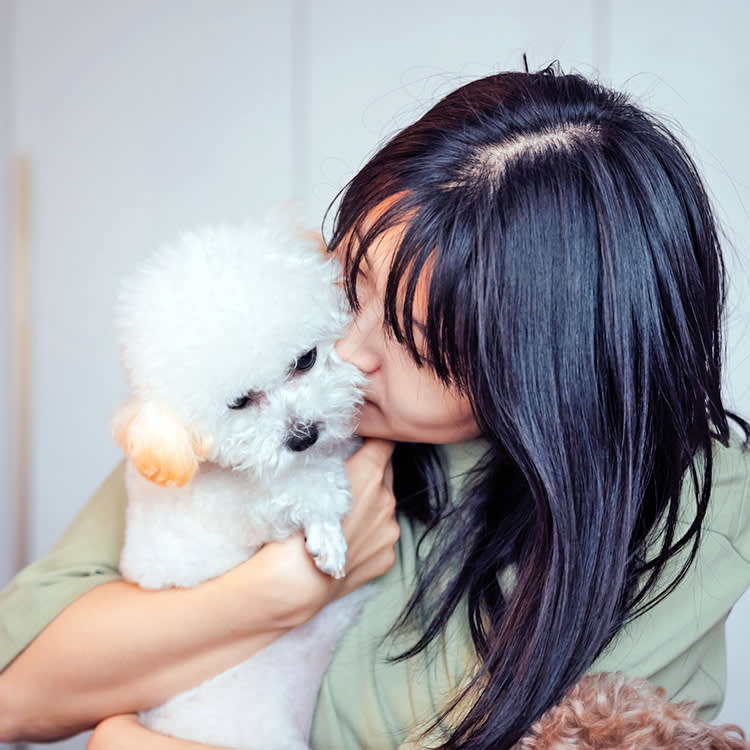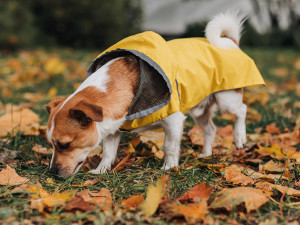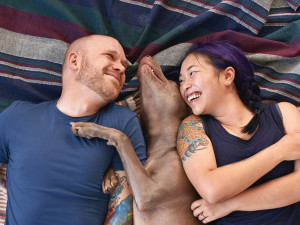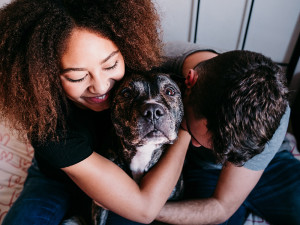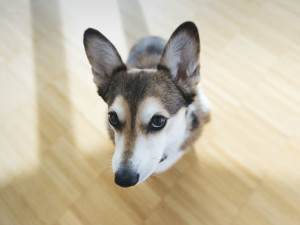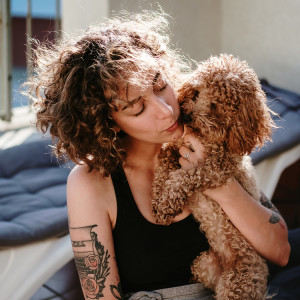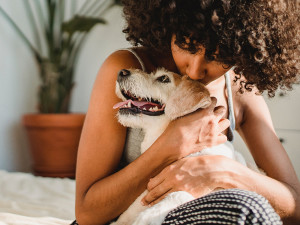You Can Recognize Your Dog by the Way They Smell, Study Says
Even more proof they’re your baby.
We know our dogs so well, sometimes it surely seems like we know everything about them. We know if they like chicken more than steak, exactly where behind their ears and on their butt the scratches are most welcome, and that their favorite toy is different in the morning than in the afternoon. Their little quirks are just as innate to us as those of the children in our lives. Our dogs are, after all, our babies.
And it turns out that’s so true even science backs this up: One study finds that we can recognize our pups by their scent, like we would our own children or other family members. It turns out, you know your favorite being in the whole world (your dog, obviously) is near just by the way they smell — even if that can be pretty stinky sometimes.
Trick question: All dogs are perfect! But find out which type is the best fit for you.
We can identify family members by odor, and dogs are family.
Researchers at the Czech University of Life Sciences Prague conducted a research studyopens in new tab, published in 2021, to determine whether people could recognize the scent of their own dog and distinguish it from other dogs. It’s incredible to know we have such abilities, but it’s hardly surprising. We spend a lot of time with our dogs and in close proximity, too, allowing us to learn their smell and notice the way it’s different from the scent of other dogs.
Our sense of smell is particularly good when it comes to recognizing individuals by odor. I’m not referring to our ability to recognize sweaty socks or the smell of a T-shirt after a weekend of camping or an evening of intense dancing. We can deal with far more subtle odors, too. Mothers can identify their babies by their scent alone, but guess what? So can women who aren’t mothers. This 1992 study opens in new tab found that women who don’t have children of their own were successful at identifying the odor of a baby they held for more than an hour. Our noses love to learn who’s who, with help from our brains, of course.
How much do you spend on your pet per year?
Knowing that people can identify human family members by their odor, it’s natural to ask how successful people are at identifying family members who just so happen to be dogs. Here’s how researchers went about doing just that.
The science of identifying dogs with our noses involves bottling their scent.
For the study, scientists collected each dog’s odor, which they did by rubbing dogs with sterile gauze pads and then placing those scent-infused gauze pads into sealed glass jars. Dog parents were presented with six jars containing dog scent and asked to choose the one that contained their own dog’s scent. The chance of choosing the correct jar by chance alone was less than 17 percent.
The big takeaway from the study is that people can identify their own dogs by odor alone. However, the results are more nuanced than that. The conclusions from the study included that:
71 percent of pet parents could identify their dogs based on odor.
Men were more successful than women at identifying the odor of their dogs. Men were successful 89.5 percent of the time versus 64.7 percent of the time for women.
It was easier to identify dogs who were fed kibble than dogs who ate lots of raw meat.
People who kept their dogs outside were better able to identify the odor of their dogs than people who kept their dogs inside.
The less frequently people bathed their dogs, the easier it was to identify them. It was harder for people who bathed their dogs frequently to pick out the scent of their own dog.
Younger people were more successful at identifying their dogs by odor than older people were.
There are differences between this study and other related research.
Previous studies of identifying dogs by their scent asked people to choose the odor of their dog from two options. Although many people made the right choice, that was not as hard as choosing from six options, as they had to do in this study. In fact, it is possible that the success in previous studies was only due to people’s ability to choose between a novel scent (not my dog!) and a familiar scent (must be my dog!) rather than truly recognizing their own dog’s unique odor.
Usually, women have more success in scent-discrimination studies, but this study found that men did better. One possible explanation: Only 13 men took part, compared to 40 women. Sometimes, small sample sizes lead to misleading conclusions. Hopefully, future studies with more people participating in the experiment will explore the differences between men’s and women’s ability to identify dogs by scent.
We don’t have to win sniffing contests with our dogs to win at sniffing our dogs.
OK, our dogs are better at sniffing than we are — we don’t generally use our noses to sniff for lost children, cancer, drugs, or endangered species. However, there is evidence our noses aren’t useless, either. Our dogs still have superior skills, so don’t bet on yourself against your dog for any olfactory contests. We can assure our dogs they don’t have to be so smug about their advantage, considerable though it still is.
